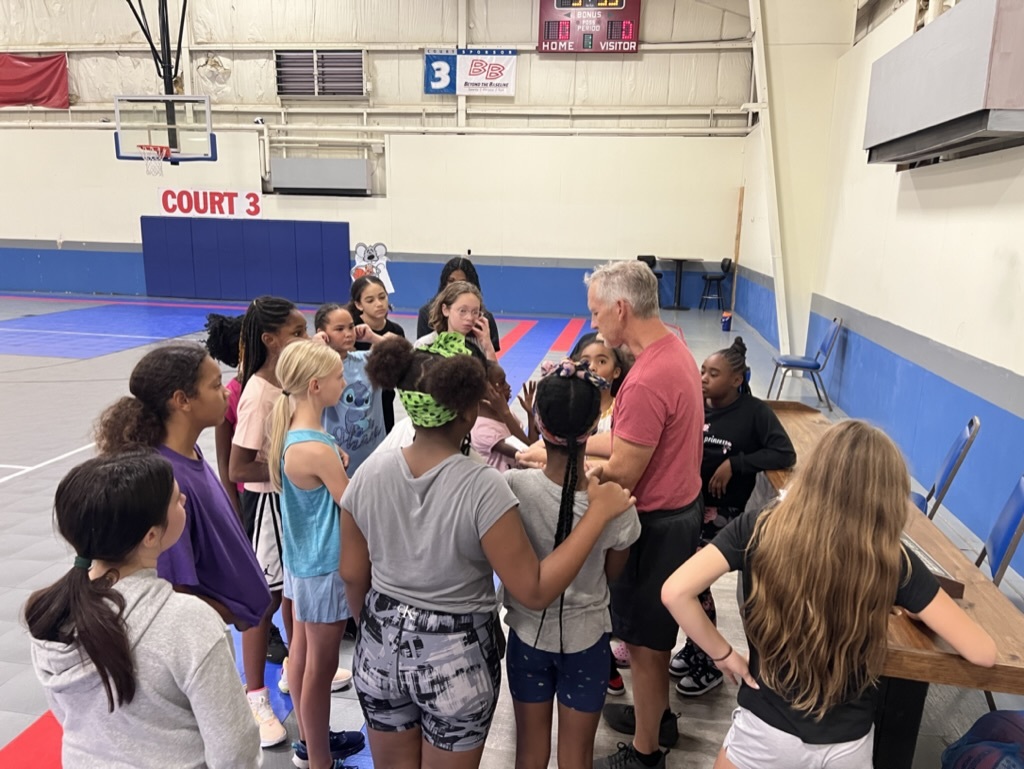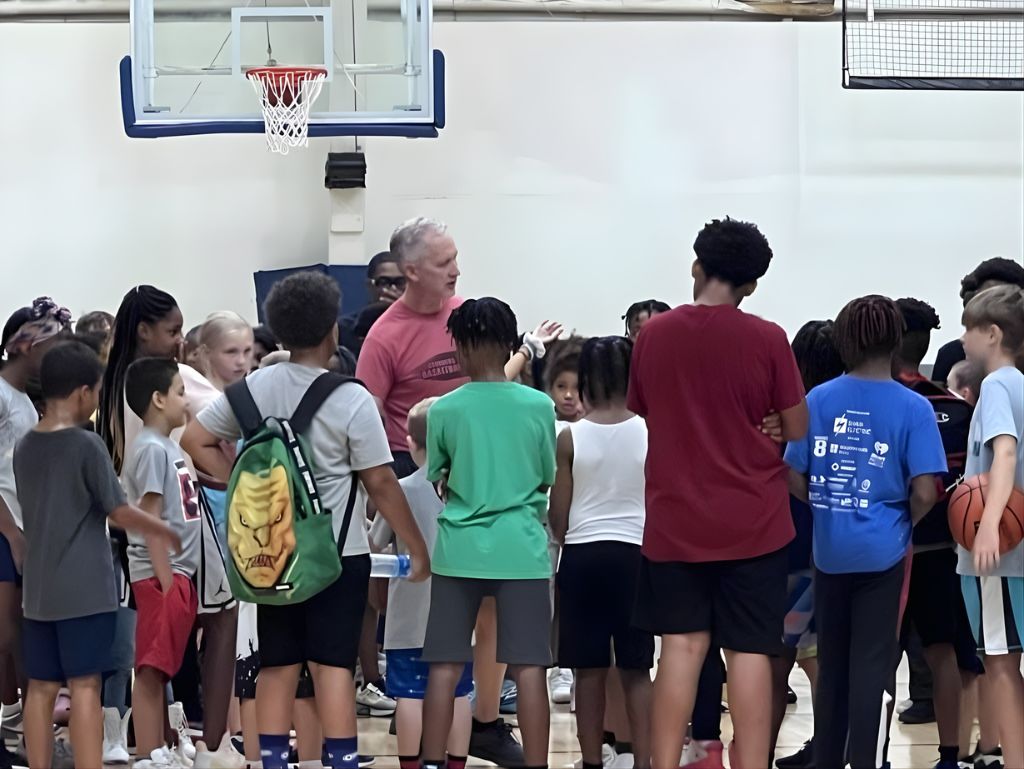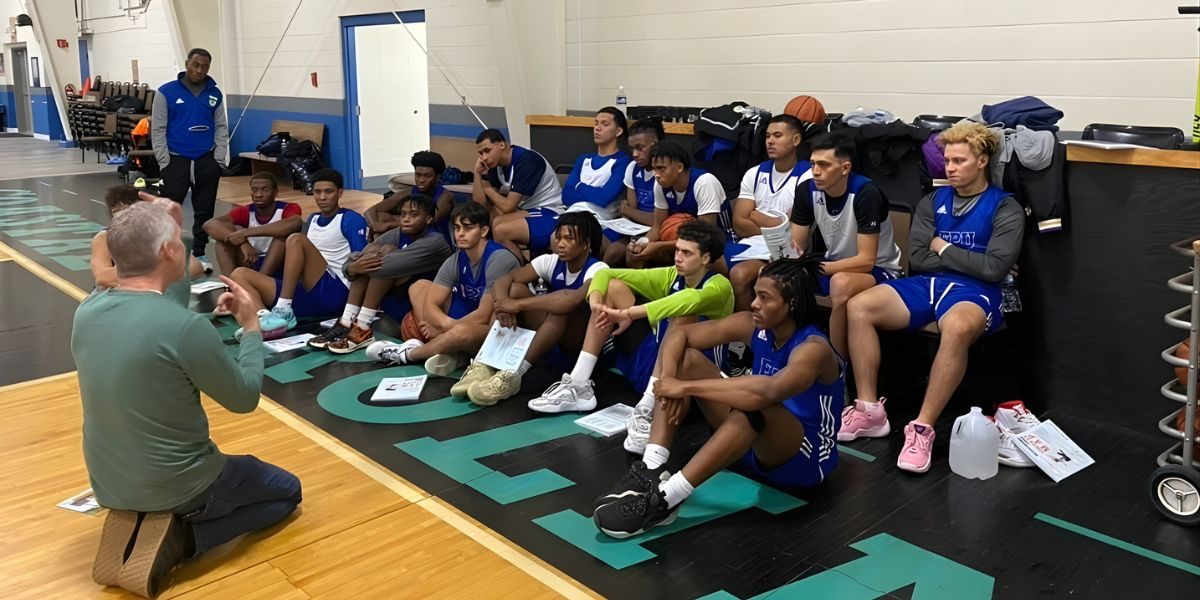By: Natalie Johnson
Gary Thrapp, known as The Youth Sports Guy, has spent more than forty years immersed in youth sports and community development across Davenport, Iowa. It’s not a nickname born from marketing; it’s one earned through decades of showing up for kids, parents, and coaches in the places where opportunity too often runs thin. With experience managing over 50,000 games and launching initiatives to reduce youth violence, Thrapp has seen every side of the game: the triumphs, the inequities, and the quiet struggles that play out far from the spotlight.
That belief became the foundation for the Quad City Youth Sports Foundation (QCYSF), a nonprofit dedicated to addressing the opportunity gap in youth sports. The organization’s mission is straightforward but impactful: to work toward making sure no child is left out of the game. Through free sports programs, leadership training, community recognition, and education for parents and coaches, QCYSF is helping rebuild the pipeline of opportunity from the ground up.
“Sports should be the great equalizer,” Thrapp says. “But too often, they can become a privilege. We’re working to reduce the barriers that might prevent kids from playing—money, access, and even belief in themselves.”
Building Access Where It’s Needed Most
QCYSF’s cornerstone offering is its free and inclusive sports programs, which reach children who might otherwise not have the chance to play due to financial or logistical limitations. These aren’t simplified versions of competitive leagues. They’re structured, high-quality programs designed to teach teamwork, discipline, and confidence—the very same traits Thrapp believes are important beyond the court.
He recalls one boy who joined after being turned away from a pay-to-play league. “He was shy, barely spoke,” Thrapp says. “By the end of the season, he was leading drills and encouraging others. That’s not just a change in a player… That could be a change in a life trajectory.”
For Thrapp, moments like that underscore why the immediate impact of QCYSF’s free programs isn’t just athletic, but deeply personal too. “When a kid feels seen, supported, and capable,” he says, “it can ripple through their family and their community.”
Recognition Beyond the Scoreboard
Yet QCYSF isn’t solely focused on developing young athletes. It’s equally committed to recognizing the community leaders who make these opportunities possible. Each year, the foundation honors coaches, parents, volunteers, and local figures who invest in youth development, reframing success in youth sports around mentorship and character rather than trophies and rankings.
“In some neighborhoods, people doing incredible work often go unnoticed,” Thrapp says. “Recognition can give them the energy to keep going and show kids that leadership can look like someone right down the street.”
These celebrations often unfold alongside QCYSF’s All-Star Caliber Events, where youth athletes from across the region showcase their skills. But the purpose extends beyond competition. These events help build community pride, connect families from different backgrounds, and reinforce that excellence can be found anywhere, if given the chance.
A Resource for Parents, Coaches, and Communities
One of the lesser-known but equally powerful sides of QCYSF’s work lies in its educational outreach. The foundation regularly hosts workshops for parents and provides training resources for coaches, bridging a critical gap in how adults engage with youth sports.
“Parents want to support their kids but don’t always know how,” Thrapp explains. “Coaches, too, are often volunteers trying to balance a dozen responsibilities. We give them the tools and language to create positive environments.”
That support can make the difference between a child walking away from sports or finding lifelong confidence in them. According to Thrapp, the most common issues parents face aren’t about logistics or cost, but about communication and perspective. “Sometimes, it’s helping parents realize their kid doesn’t have to be the best. They just have to love showing up,” he says.

Turning Insight Into Impact
Behind QCYSF’s grassroots feel lies a surprisingly data-driven approach. During tournaments and events, the foundation collects research and performance data—not on players’ stats, but on participation rates, behavioral outcomes, and community engagement.
That data informs everything from how programs are structured to which neighborhoods need additional outreach. “We’ve adjusted entire schedules, coaching ratios, and mentoring programs based on what we learn,” Thrapp notes. “The numbers can tell us what the community needs before the headlines do.”
It’s this combination of human insight and analytical strategy that allows QCYSF to measure success beyond attendance or game outcomes. In neighborhoods where the foundation operates, youth violence has dropped, and school participation has increased. But for Thrapp, the most telling sign of success is simpler: “When a kid shows up the next day, that’s progress.”
What Sets QCYSF Apart

In an era dominated by high-cost club teams and national nonprofits, QCYSF’s competitive edge lies in its authentic, community-first model. Thrapp isn’t an executive parachuting in with a marketing campaign; he’s the local Youth Sports Guy who has spent four decades organizing more than 50,000 games and mentoring kids through the highs and lows of youth athletics.
“We’re not a top-down organization,” he says. “We’re from the same streets these kids play on. That trust is our advantage.”
The Bigger Picture
As QCYSF grows, the question many ask is whether this model could scale nationally. Thrapp believes it has the potential to, but only if the heart of the mission stays intact. “You can replicate the systems,” he says, “but not sincerity. Any city could do what we’re doing, as long as they truly listen to their kids.”
Ultimately, Thrapp’s vision for the Quad Cities extends far beyond basketball courts or soccer fields. It’s about using sports as a unifying force for community rebuilding, and a way to teach values, reduce division, and create new cycles of opportunity.
“Sports give us a shared language,” he reflects. “It’s how we teach teamwork, humility, and resilience. When kids learn those lessons early, the whole city gets better.”
For parents, coaches, and community members who want to be part of that movement, the invitation is open. You can learn more, get involved, or partner with the foundation by visiting Quad Cities Youth Sports Foundation.
Because for Gary Thrapp, the game isn’t just about winning. It’s about making sure everyone has a chance to play.

















